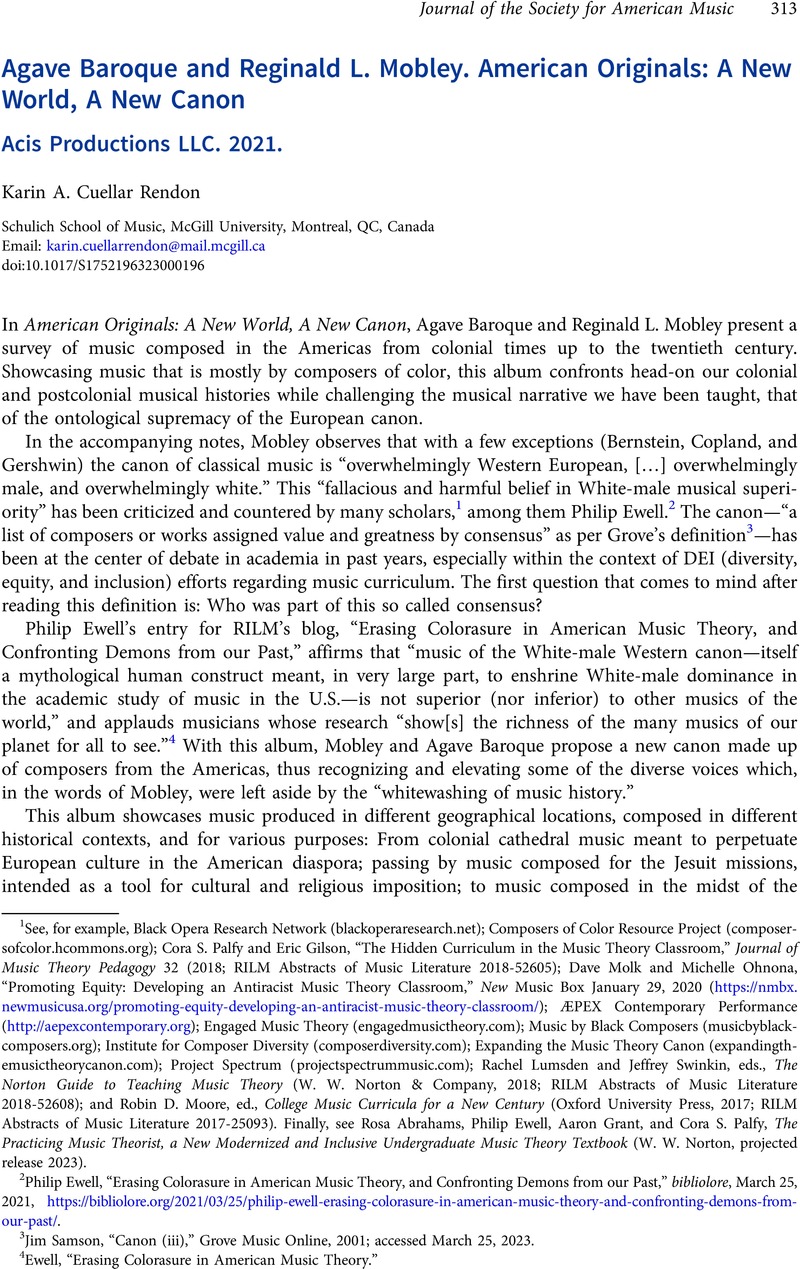No CrossRef data available.
Published online by Cambridge University Press: 06 September 2023

1 See, for example, Black Opera Research Network (blackoperaresearch.net); Composers of Color Resource Project (composersofcolor.hcommons.org); Palfy, Cora S. and Gilson, Eric, “The Hidden Curriculum in the Music Theory Classroom,” Journal of Music Theory Pedagogy 32 (2018; RILM Abstracts of Music Literature 2018-52605)Google Scholar; Dave Molk and Michelle Ohnona, “Promoting Equity: Developing an Antiracist Music Theory Classroom,” New Music Box January 29, 2020 (https://nmbx.newmusicusa.org/promoting-equity-developing-an-antiracist-music-theory-classroom/); ÆPEX Contemporary Performance (http://aepexcontemporary.org); Engaged Music Theory (engagedmusictheory.com); Music by Black Composers (musicbyblackcomposers.org); Institute for Composer Diversity (composerdiversity.com); Expanding the Music Theory Canon (expandingthemusictheorycanon.com); Project Spectrum (projectspectrummusic.com); Lumsden, Rachel and Swinkin, Jeffrey, eds., The Norton Guide to Teaching Music Theory (W. W. Norton & Company, 2018; RILM Abstracts of Music Literature 2018-52608)Google Scholar; and Moore, Robin D., ed., College Music Curricula for a New Century (Oxford University Press, 2017; RILM Abstracts of Music Literature 2017-25093)CrossRefGoogle Scholar. Finally, see Abrahams, Rosa, Ewell, Philip, Grant, Aaron, and Palfy, Cora S., The Practicing Music Theorist, a New Modernized and Inclusive Undergraduate Music Theory Textbook (W. W. Norton, projected release 2023)Google Scholar.
2 Philip Ewell, “Erasing Colorasure in American Music Theory, and Confronting Demons from our Past,” bibliolore, March 25, 2021, https://bibliolore.org/2021/03/25/philip-ewell-erasing-colorasure-in-american-music-theory-and-confronting-demons-from-our-past/.
3 Jim Samson, “Canon (iii),” Grove Music Online, 2001; accessed March 25, 2023.
4 Ewell, “Erasing Colorasure in American Music Theory.”
5 A person from Spanish South or Central America, especially one of pure Spanish descent.
6 A person of mixed race, especially one having Spanish and indigenous descent.
7 A person of mixed white and Black ancestry, especially a person with one white and one Black parent.